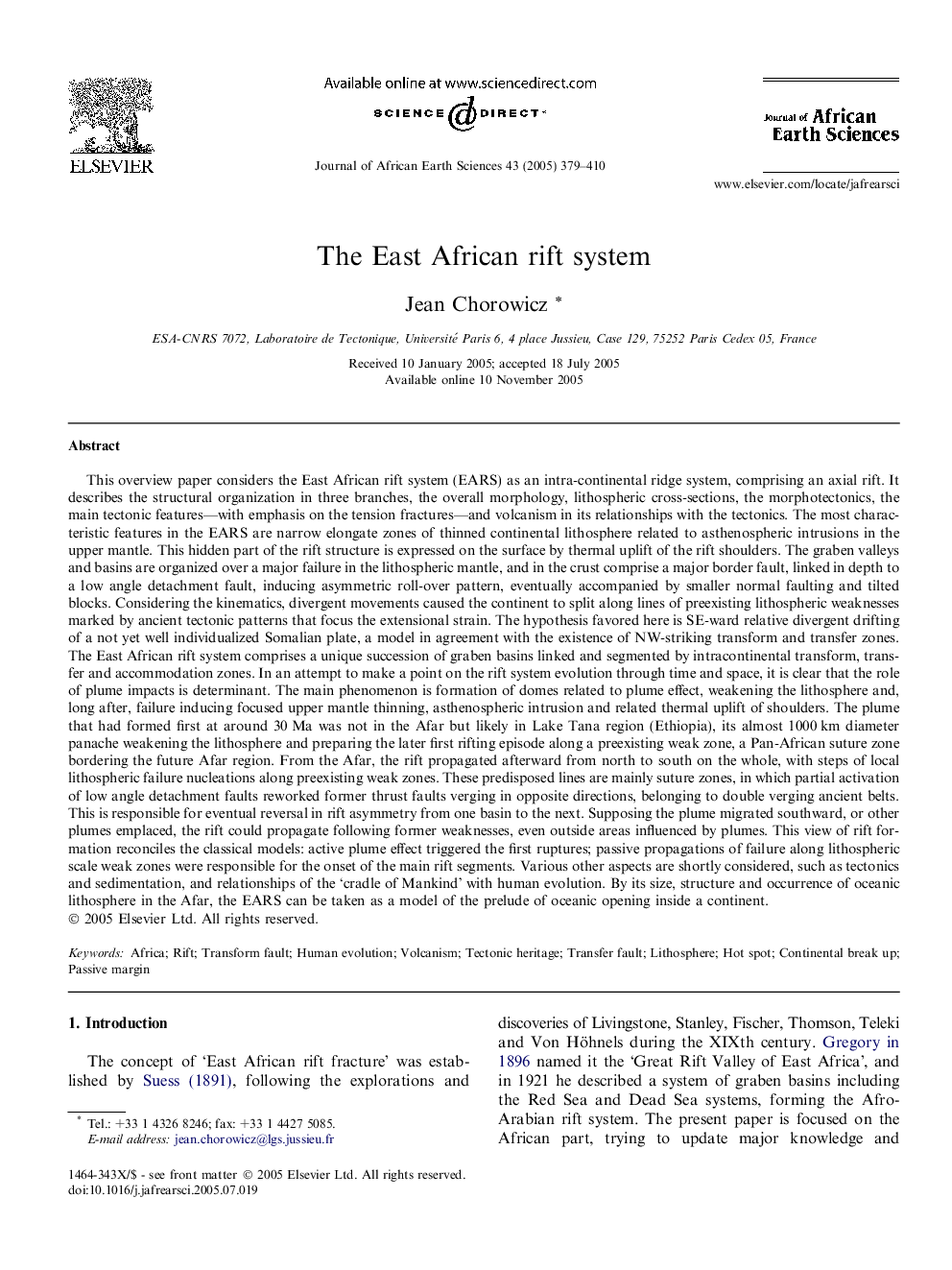| کد مقاله | کد نشریه | سال انتشار | مقاله انگلیسی | نسخه تمام متن |
|---|---|---|---|---|
| 9535310 | 1640265 | 2005 | 32 صفحه PDF | دانلود رایگان |
عنوان انگلیسی مقاله ISI
The East African rift system
دانلود مقاله + سفارش ترجمه
دانلود مقاله ISI انگلیسی
رایگان برای ایرانیان
کلمات کلیدی
موضوعات مرتبط
مهندسی و علوم پایه
علوم زمین و سیارات
زمین شناسی
پیش نمایش صفحه اول مقاله

چکیده انگلیسی
This overview paper considers the East African rift system (EARS) as an intra-continental ridge system, comprising an axial rift. It describes the structural organization in three branches, the overall morphology, lithospheric cross-sections, the morphotectonics, the main tectonic features-with emphasis on the tension fractures-and volcanism in its relationships with the tectonics. The most characteristic features in the EARS are narrow elongate zones of thinned continental lithosphere related to asthenospheric intrusions in the upper mantle. This hidden part of the rift structure is expressed on the surface by thermal uplift of the rift shoulders. The graben valleys and basins are organized over a major failure in the lithospheric mantle, and in the crust comprise a major border fault, linked in depth to a low angle detachment fault, inducing asymmetric roll-over pattern, eventually accompanied by smaller normal faulting and tilted blocks. Considering the kinematics, divergent movements caused the continent to split along lines of preexisting lithospheric weaknesses marked by ancient tectonic patterns that focus the extensional strain. The hypothesis favored here is SE-ward relative divergent drifting of a not yet well individualized Somalian plate, a model in agreement with the existence of NW-striking transform and transfer zones. The East African rift system comprises a unique succession of graben basins linked and segmented by intracontinental transform, transfer and accommodation zones. In an attempt to make a point on the rift system evolution through time and space, it is clear that the role of plume impacts is determinant. The main phenomenon is formation of domes related to plume effect, weakening the lithosphere and, long after, failure inducing focused upper mantle thinning, asthenospheric intrusion and related thermal uplift of shoulders. The plume that had formed first at around 30Â Ma was not in the Afar but likely in Lake Tana region (Ethiopia), its almost 1000Â km diameter panache weakening the lithosphere and preparing the later first rifting episode along a preexisting weak zone, a Pan-African suture zone bordering the future Afar region. From the Afar, the rift propagated afterward from north to south on the whole, with steps of local lithospheric failure nucleations along preexisting weak zones. These predisposed lines are mainly suture zones, in which partial activation of low angle detachment faults reworked former thrust faults verging in opposite directions, belonging to double verging ancient belts. This is responsible for eventual reversal in rift asymmetry from one basin to the next. Supposing the plume migrated southward, or other plumes emplaced, the rift could propagate following former weaknesses, even outside areas influenced by plumes. This view of rift formation reconciles the classical models: active plume effect triggered the first ruptures; passive propagations of failure along lithospheric scale weak zones were responsible for the onset of the main rift segments. Various other aspects are shortly considered, such as tectonics and sedimentation, and relationships of the 'cradle of Mankind' with human evolution. By its size, structure and occurrence of oceanic lithosphere in the Afar, the EARS can be taken as a model of the prelude of oceanic opening inside a continent.
ناشر
Database: Elsevier - ScienceDirect (ساینس دایرکت)
Journal: Journal of African Earth Sciences - Volume 43, Issues 1â3, October 2005, Pages 379-410
Journal: Journal of African Earth Sciences - Volume 43, Issues 1â3, October 2005, Pages 379-410
نویسندگان
Jean Chorowicz,